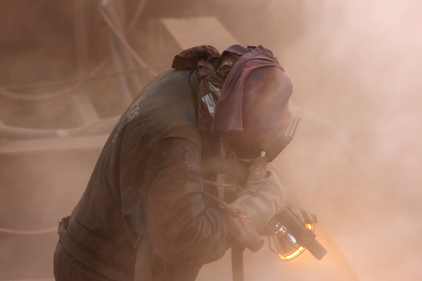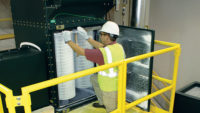Combustible dust is fine particulate dust generated from organic products such as wood, metals, grains, agricultural, chemicals, plastics, paper and carbonaceous products. Manufacturing and production facilities equipment and machinery pulverize, mill, grind, crush, macerate and cut the bulk product. In return, dust is generated and accumulates on all equipment and facility structure surfaces. The fine powder dust, which is suspended on the higher, inaccessible and unnoticeable surfaces, is the most problematic for combustible dust.
Healthy workers, healthy business
Combustible dust can impact and affect facility workers’ health, leading to illnesses and injuries. J. Paul Leigh of the Stanford Medical Center notes that businesses spend $170.9 billion a year on costs associated with occupational injuries and illnesses — expenditures that come straight out of company profits. Injuries and illnesses increase workers’ compensation and retraining costs, absenteeism and production faults. They also decrease productivity, morale, and ultimately, profits.
Cleaning is key
Cleaning is the key to preventing combustible dust risks. Some important areas of focus can include high ceiling and surface cleaning, HVAC air conveyance cleaning, dust collector cleaning, conveyor belt cleaning, silo tank cleaning, lab fume hood cleaning, and dust control vacuuming. Keeping these areas clean and maintained helps prevent airborne dust and particulates from accumulating in manufacturing and production facilities. Cleaning of combustible dust may also help promote equipment longevity, decrease utility costs for operating equipment, increase the brightness of lighting, stabilize insurance rates, and allow a greater return on investment on manufacturing equipment.
Properly trained personnel should perform combustible dust cleaning. It is important to implement a safety training program that covers the dangers of handling and cleaning combustible dusts.
Explosion-proof HEPA (high efficiency particulate air filtration) vacuums are the primary type of equipment to be used for combustible dust cleaning. Sweeping with a broom or using compressed air are not safe means of cleaning combustible dust. The act of broom sweeping and the use of compressed air actually create dust clouds and release particulate into the air, which may create more issues with sensitive equipment, and possible combustible dust explosions.
Proceed safely
Performing combustible dust cleaning requires several important procedures. Safety is the top priority. Following are some of the issues that need to be addressed to ensure safe handling and cleaning of combustible dusts:
- Preventing static electricity, sparking and any electrical charge is the first preventative step. Proper grounding of in-house electrical systems, equipment, forklifts, high-reach equipment, vacuums, extension cords and lighting is mandatory under the NFPA 654 Standard. With certain combustible dusts, the simple act of static charge from a human can create a charge that can lead to a dust explosion.
- Testing and sampling of the powder and bulk dust particulate is required to determine if the dust particulate is or isn’t combustible or explosive. MSDS sheets of each product can be useful in testing the dust.
- Proper lockout/tagout documentation, slip and fall prevention, high reach and harness protection, and confined space awareness are some of the safety concerns that may need to be addressed to comply with OSHA regulations.
- Donning proper PPE is important. Essential protection basics can include: a HEPA filtered respirator, safety lanyards and harnesses, hard hats, safety glasses, ear protection, disposable gloves, special coveralls and steel toe boots.


